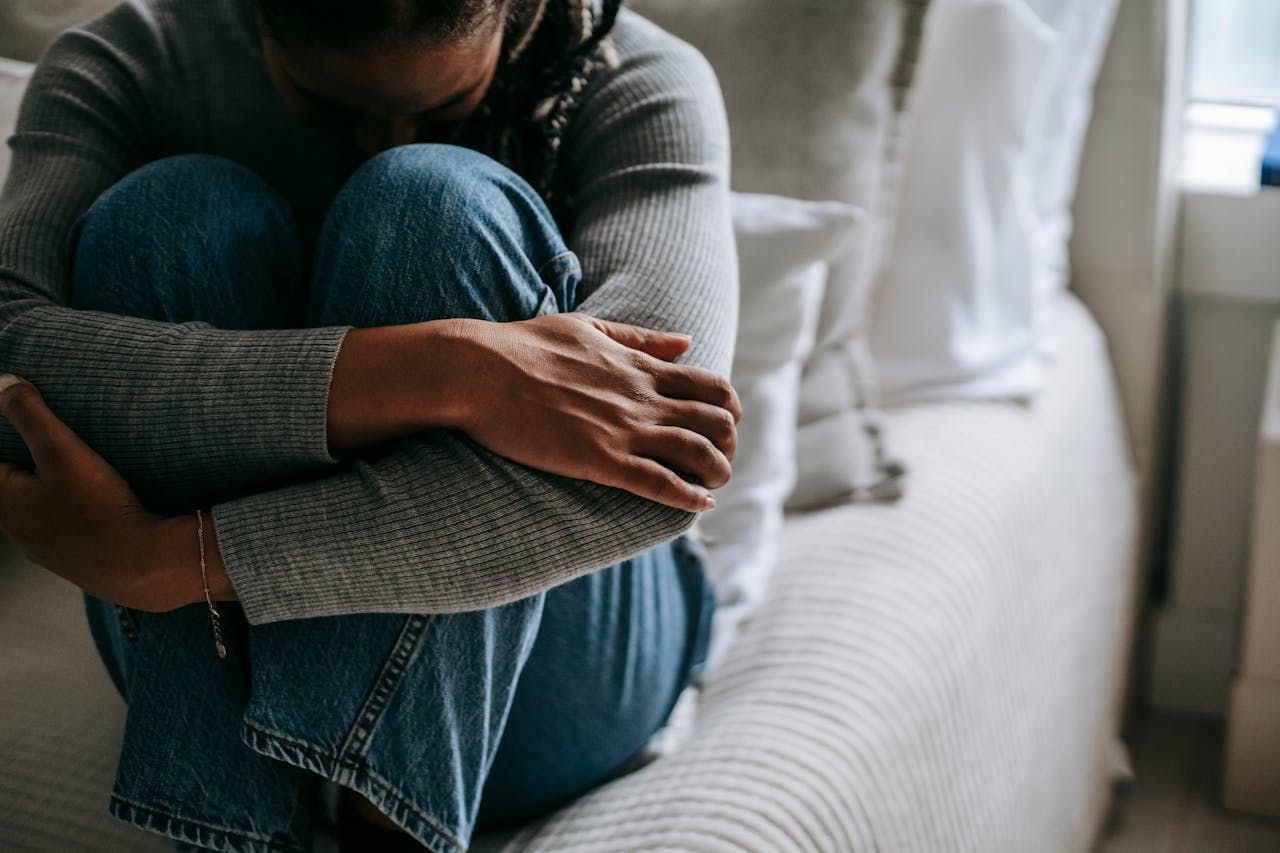How To Sleep With Cervical Spondylosis

If you're suffering from cervical spondylosis, getting a good night's sleep might feel impossible. Neck pain that persists throughout the night is nothing short of exasperating. But luckily, there are solutions out there.
Knowing how to sleep with cervical spondylosis helps you catch those all-important ZZZs and wake up feeling well-rested the next day. Keep reading for expert-approved tips and tricks for sleeping better with this condition.
What Is Cervical Spondylosis?
Before we discuss the tricks and tips, we’ll briefly recap this condition. So, what is cervical spondylosis?
Cervical spondylosis (also known as arthritis of the neck) is wear and tear in the neck. It’s a degenerative condition that affects the discs, ligaments, and joints in the cervical portion of the spine.
Wear and tear is usually caused by ageing. As we grow older, the discs in our spine dehydrate and shrink, and sometimes, signs of osteoarthritis also develop (Mayo Clinic, 2018).
It’s also a prevalent condition. 50% of people over 40 and 85% over 60 experience minor cervical spondylosis (Catherine, 2013).
Cervical Spondylosis Symptoms
Many people with this condition experience no symptoms at all. However, when symptoms appear, there are nonsurgical treatments to minimise pain or other impacts.
Typical symptoms of cervical spondylosis include:
- Pain and stiffness in the neck
- Bump or knot in the neck
- Dizziness
- Clicking or popping sound when moving the neck
- Muscle spasms
In rare cases, cervical spondylosis results in a narrowing of the spinal canal. This can lead to a pinched spinal cord or nerve roots, further causing tingling and numbness in the hands, arms, feet, or legs. It can also cause a lack of coordination, mobility issues, and loss of bladder or bowel control.
Cervical Spondylosis Risk Factors
There are a few specific risk factors associated with cervical spondylosis. These include:
- Genetics
- Neck injuries
- Age
- Occupation (e.g. jobs with repetitive neck motions or stress on the neck)
- Smoking (linked to increased neck pain)
How Cervical Spondylosis Affects Sleep
A key impact of cervical spondylosis is affected sleep. Since symptoms of this disorder include neck stiffness and pain, it can be challenging to find a comfortable sleeping position. This means you’re tossing and turning all night, missing out on valuable sleep.
Not being able to sleep with cervical spondylosis can start an unfortunate cycle. Sleep is critical to healing. Damaged tissues heal at a faster rate during sleep, and adrenaline released through wakeful stress prevents cell division needed for healing (Adam and Oswald, 1984). So, without good sleep, the body can’t soothe the condition.
A lack of sleep can also leave you feeling moody, but it goes further than that. Sleep deprivation can lower your overall cognitive ability (Alhola and Polo-Kantola, 2007). Getting those eight hours has never been so important!

How To Sleep With Cervical Spondylosis
Learning how to sleep with cervical spondylosis is easy with the proper routine and sleeping positions. Here are some strategies to boost the quality of your rest.
Pre-Bedtime Routines For Cervical Spondylosis
Pre-bedtime routines can help you alleviate your symptoms before bed, resulting in a more restful night.
Gentle neck stretching exercises are a popular option. These focus on strengthening the neck muscles and shoulder blades, thus relieving pain and improving your strength.
Common cervical spondylosis exercises include:
- Prone Rows — Lie on your stomach with one arm off the side of the bed. Make a rowing motion by moving your arm to the ceiling as you bend your elbow. Squeeze your shoulder blades down and hold for a few seconds. Repeat on each arm for ten reps.
- Robbery Exercise — Target the lower part of the trapezius muscle by standing with both arms straight at your sides. Lift your arms to the side at shoulder height and bend your elbows to 90° angles. Squeeze your shoulder blades down and hold for 5 to 10 seconds.
- Chin Tucks — Lie on your back with your arms at your side. Nod your chin inward (give yourself a double chin) and hold for 10 seconds. Release and repeat.
Another way to prepare your neck before sleep is via heat therapy. Thermo-therapy has been proven to reduce pain and increase soft tissue flexibility (Farahbod, 2014).
Resting a hot water bottle on your neck for half an hour before bed is a great way to relieve pain or stiffness. Be careful to let the bottle cool down so you don’t burn yourself.
Shop Groove PillowsSleeping Positions For Cervical Spondylosis
The best sleeping positions for cervical spondylosis are on your back or on your side.
However, your main goal should be to support your neck regardless of your sleeping position. Keep your neck and spine in an untwisted position while you rest, decreasing strain and improving posture.
If on your back, you should look upwards and use a pillow under your head to support your neck.
If on your side, you must ensure that your head and neck look towards the side you’re sleeping on. Likewise, you should keep your back and spine straight to avoid any extra back pain or neck strain.
Sleeping positions for cervical spondylosis always come back to how well your neck is supported. Sleep aids like a pillow or memory foam mattress are best for this — but more about these below.

The Best Pillow For Cervical Spondylosis
Consider adding a specialised pillow to your nighttime routine to improve your sleep.
The best pillow for cervical spondylosis is usually memory foam, as these have viscoelastic properties. This basically means that they mould to your body and remove any excess strain, giving you a weightless feel.
Memory foam is also temporarily sensitive, so your body will warm it up and make it extra cosy.
When looking for a memory foam pillow for cervical spondylosis, “cervical pillows” that have a dip in the middle for your neck are a great idea. They provide extra support and pain relief by supporting your neck and shoulders.
The Original Groove Pain Relief Pillow has a cervical dip shape that helps remove pressure from stiff necks and aching backs. It also prevents neutral spinal alignment, ensuring your posture is healthy throughout the night. Perfect for both back and side sleepers.
Shop The Groove Pillow NowCervical Spondylosis - The Bottom Line
Sleeping with cervical spondylosis often feels impossible. But with these helpful tricks, you’ll be back to deep sleep in no time.
If your neck pain persists for weeks or becomes increasingly more painful, contact a doctor for professional medical advice. Similarly, if you notice a decrease in mobility, pain or numbness in the extremities, or a loss of bladder or bowel control, contact a medical provider immediately.
Learn more about the Groove Pillow online today. Or jump to our blog for more expert advice.
References
- Adam, K. and Oswald, I. (1984). Sleep helps healing. British Medical Journal (Clinical research ed.), [online] 289(6456), pp.1400–1401. Available at: https://www.ncbi.nlm.nih.gov/pmc/articles/PMC1443671/?page=1.
- Alhola, P. and Polo-Kantola, P. (2007). Sleep deprivation: Impact on cognitive performance. Neuropsychiatric disease and treatment, [online] 3(5), pp.553–567. Available at: https://www.ncbi.nlm.nih.gov/pmc/articles/PMC2656292/.
- Catherine, M. (2013). Cervical stenosis – PM&R KnowledgeNow. [online] Aapmr.org. Available at: https://now.aapmr.org/cervical-stenosis/.
- Farahbod, F. (2014). The Efficacy of Thermotherapy and Cryotherapy on Pain Relief in Patients with Acute Low Back Pain, a Clinical Trial Study. JOURNAL OF CLINICAL AND DIAGNOSTIC RESEARCH, 8(9). doi:https://doi.org/10.7860/jcdr/2014/7404.4818.
- Mayo Clinic (2018). Cervical spondylosis - Symptoms and causes. [online] Mayo Clinic. Available at: https://www.mayoclinic.org/diseases-conditions/cervical-spondylosis/symptoms-causes/syc-20370787.

